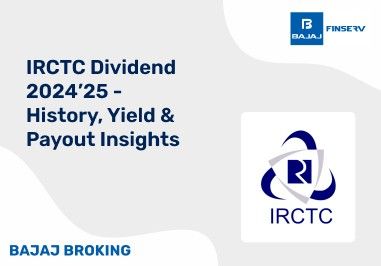BAJAJ BROKING
Ather Energy IPO is Open!
Open a Free Demat Account
Trade Now, Pay Later with up to 4x
Track Market Movers Instantly
What is CMP in Share Market?
Analysing the performance of stocks and taking actionable decisions based on them is a complex job. You not only need several metrics but also understand them thoroughly to be able to conduct a detailed analysis. One such primary metric is the Current Market Price (CMP).
What makes CMP in the share market a crucial metric is the fact that all trades are directly impacted by it. Thus, it becomes imperative to know the concept in full. In this blog, we will explore what CMP is, understand it with an example, know its importance, and compare it with the Last Traded Price (LTP).
Highlights of the Blog
- What is CMP in Share Market?
- Example of CMP
- Why is CMP important?
- Difference between CMP and LTP
Current Market Price - An Overview
As the name suggests, the current market price (CMP) is the price at which the share is currently being traded. CMP is used to buy or sell a particular stock at any given point in time. During the market hours, this price constantly changes as buyers and sellers actively participate in trading.
CMP at the time of close can be significantly different from the CMP at the time of opening of the stock market. Various factors constantly affect the CMP of a stock. Some of the factors include - demand and supply, market sentiment, economic condition, company's performance, liquidity, and other macroeconomic indicators.
A Clearer Understanding Through an Example
Suppose PQR Limited is a company listed on the Indian stock exchanges. If the price of the PQR Ltd share at the time of market opening is ₹100 per share, then its initial CMP is ₹100.
Now let’s say that, if PQR Limited reports a positive earnings report and the investors start buying the stock at ₹110, the CMP of the stock will change to ₹110. Inversely, if there is negative economic development later in the day and it causes a dip, then CMP will change to such a lower price.
As transactions get executed, PQR Limited’s current market price fluctuates throughout the trading session. This highlights the dynamic nature of the stock market and how traders utilise CMP fluctuations to make informed investment decisions.
Exploring its Importance
The CMP in the share market helps investors gauge the stock’s performance. It works as a primary metric which can be compared with the historical price data to withdraw insightful information. Combined with technical and fundamental analysis, you can also project future movements in the market price.
Furthermore, CMP also holds significance while placing market orders. This is because the market orders are executed at the current market price at the time of placing the order. Knowing CMP at the time of placing the order gives you an estimate of the price at which your order may get executed.
Difference between CMP and LTP
CMP is often confused with another metric related to the stock price - LTP. It stands for the Last Traded Price. And as the name suggests, it represents the price at which the last order was executed. Though it sounds similar to the CMP, there are two major differences between the two.
- While CMP represents the price at which your order may be executed, LTP reflects the price at which the previous order has already been executed.
- During the trading session, CMP is continuously updated while LTP is updated only when an order is executed.
To Summarise
CMP in the share market is the current market price at which the stock is currently trading. However, it is one of the primary terms in the stock market. There are many market-specific terms which are regularly used by traders, investors and news anchors alike. Learning and understanding these jargons will help you perceive the market-related information in a better way.
Disclaimer: Investments in the securities market are subject to market risk, read all related documents carefully before investing.
This content is for educational purposes only. Securities quoted are exemplary and not recommendatory.
For All Disclaimers Click Here: https://bit.ly/3Tcsfuc
Share this article:
Read More Blogs
Disclaimer :
The information on this website is provided on "AS IS" basis. Bajaj Broking (BFSL) does not warrant the accuracy of the information given herein, either expressly or impliedly, for any particular purpose and expressly disclaims any warranties of merchantability or suitability for any particular purpose. While BFSL strives to ensure accuracy, it does not guarantee the completeness, reliability, or timeliness of the information. Users are advised to independently verify details and stay updated with any changes.
The information provided on this website is for general informational purposes only and is subject to change without prior notice. BFSL shall not be responsible for any consequences arising from reliance on the information provided herein and shall not be held responsible for all or any actions that may subsequently result in any loss, damage and or liability. Interest rates, fees, and charges etc., are revised from time to time, for the latest details please refer to our Pricing page.
Neither the information, nor any opinion contained in this website constitutes a solicitation or offer by BFSL or its affiliates to buy or sell any securities, futures, options or other financial instruments or provide any investment advice or service.
BFSL is acting as distributor for non-broking products/ services such as IPO, Mutual Fund, Insurance, PMS, and NPS. These are not Exchange Traded Products. For more details on risk factors, terms and conditions please read the sales brochure carefully before investing.
Investments in the securities market are subject to market risk, read all related documents carefully before investing. This content is for educational purposes only. Securities quoted are exemplary and not recommendatory.
For more disclaimer, check here : https://www.bajajbroking.in/disclaimer
Our Secure Trading Platforms
Level up your stock market experience: Download the Bajaj Broking App for effortless investing and trading













